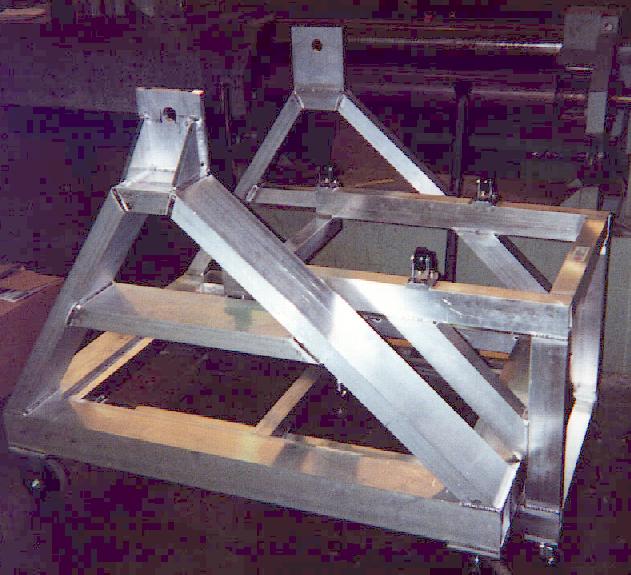 |
Cart pair that would support Mimir. The outer cart,
with the twin vertical pieces with holes, captures the warm Mimir
bulkhead via clovis pins. The inside, smaller cart supports the outer
stainless steel cryostat shell when it goes on and off the warm bulkhead.
Bob Kingsland of the BU SIF welded all these aluminum box pieces to
form the carts. |
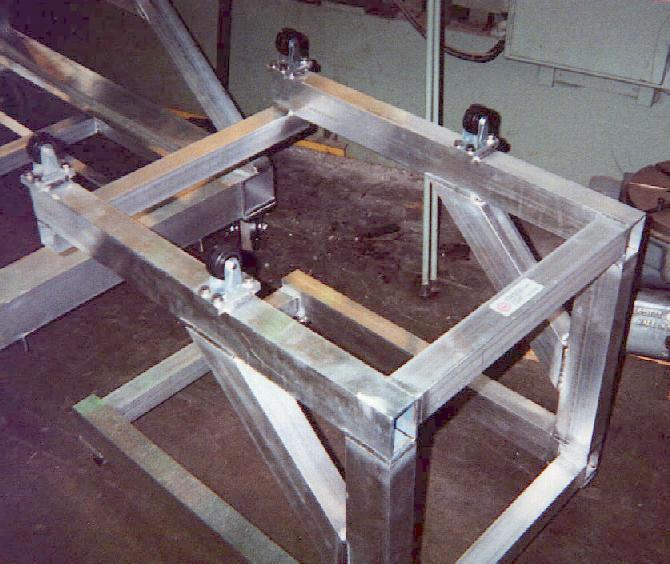 |
Lower, inner cart (SS cryostat shell cart), showing
the four wheels that contact the shell when it rests on top of the
cart. Hidden are the four underside wheels that allow the cart to
move under the larger cart. |
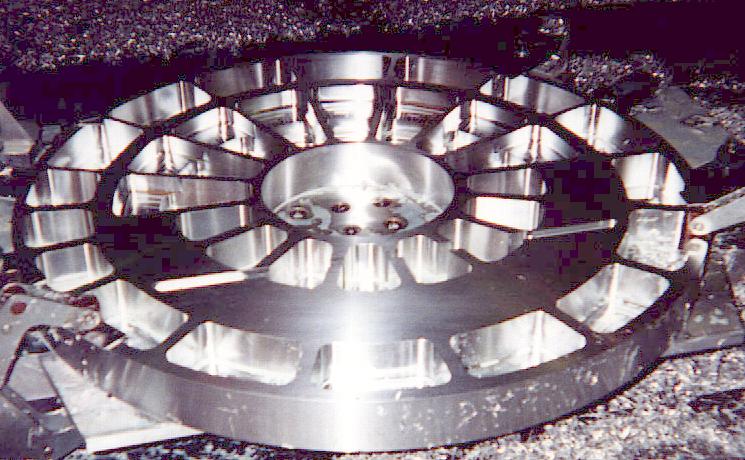 |
Warm bulkhead undergoing lightweighting and feedthrough
hole machining. |
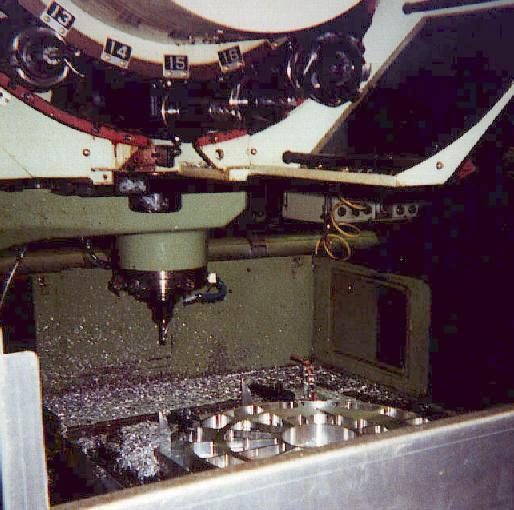 |
Okuma 5 machine performing lightweighting of warm bulkhead
in the BU SIF. |
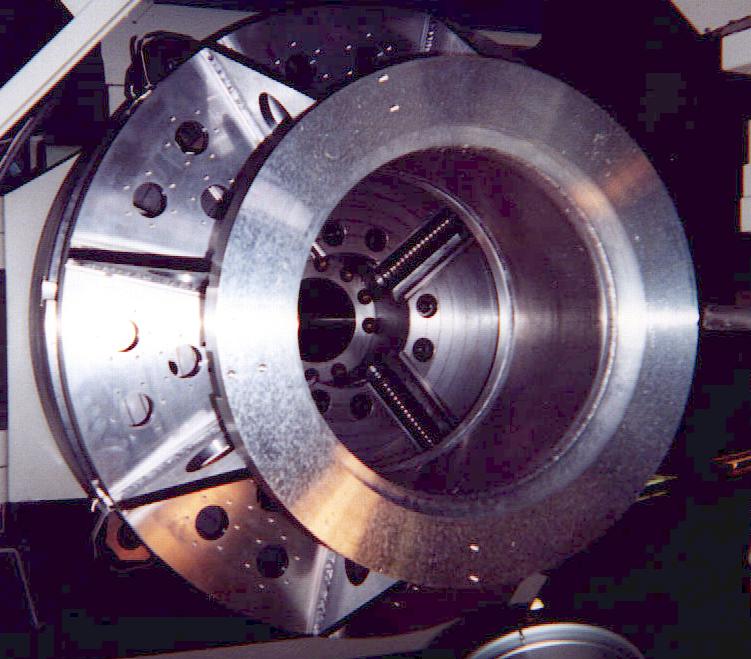 |
"Big Ben" - Warm bulkhead (with many feedthrough
holes) has been welded via vertical gussets to the telescope flange
and window holder. The entire assembly is mounted on a lathe for facing
off the telescope flange. |
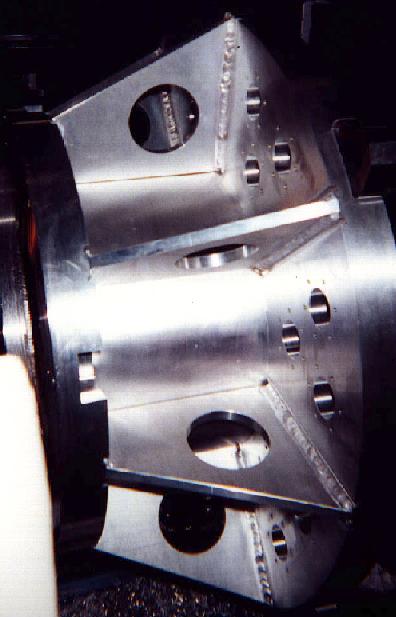 |
Side view of "Big Ben" showing gussets, welds,
and feedthrough holes. |
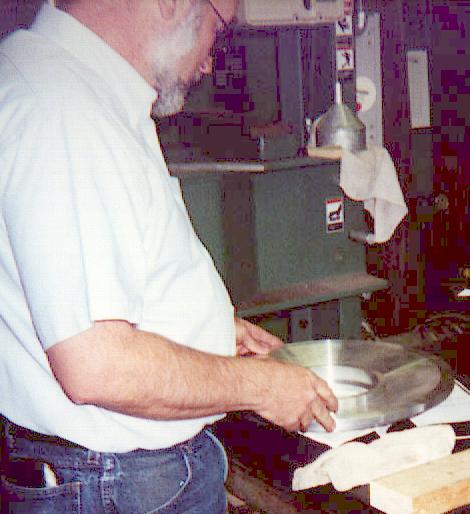 |
Leo Dumais, SIF Director during the time of Mimir fabrication,
inspecting the window mount and front cover. |
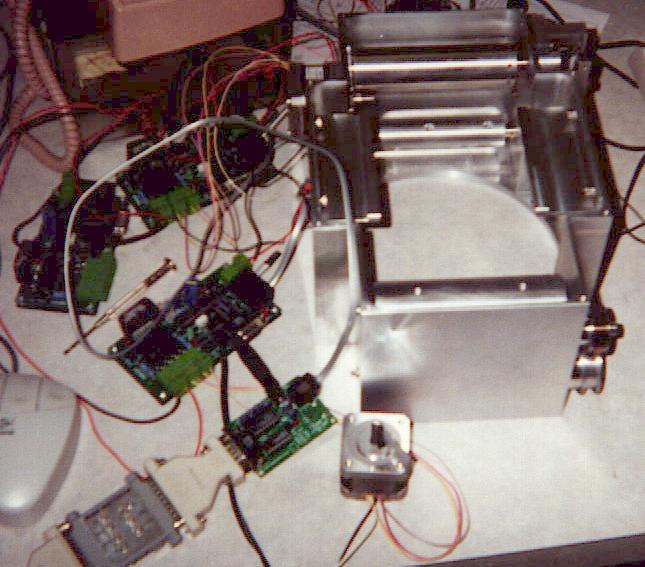 |
Stepper motor controllers, stepper motor, and the slit
belt unit. Our original concept for placing scenes at the focal plane
of Mimir was to use a steel belt, with slits and more complex scenes
photo or laser etched into the belt. A cog and drive system would
move the belt across the focal plane under stepper motor control |
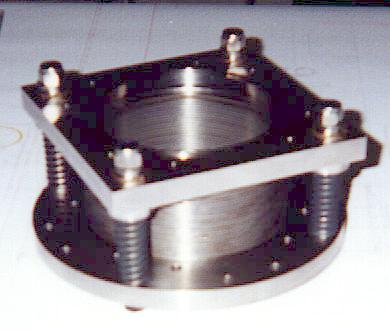 |
Vibration isolator for the CTI 1050 cold head. This
unit consists of two plates, spanned by thin walled stainless steel
bellows. Captured springs and coaxial shafts ensured that under vacuum
the cold head would float free from any hard mountings against the
warm bulkhead. In this way, the piston strokes of the cold head would
not drive mechanical vibrations into the optics or detector package
inside Mimir. |








